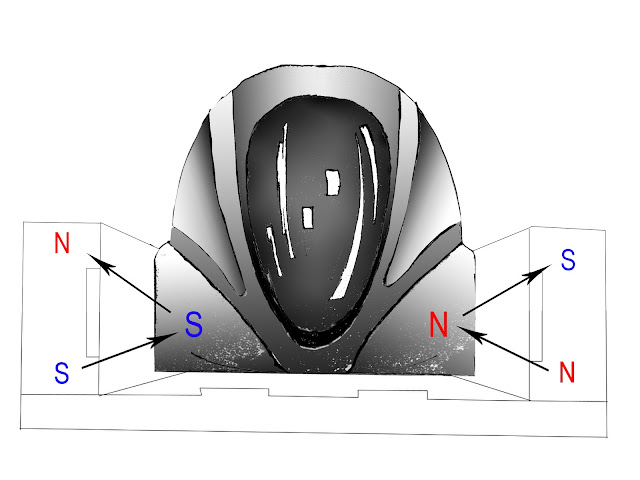by Erald Varaku
Scientists and engineers have developed maglev trains which levitate above a magnetic ! eld
(magnetic levitation = maglev). This system is achieved by making use of the superconductor
technology. This type of suspension systems (EDS = electrodynamic suspension) are still being
developed. This type of transportation is quiet promising and has its own advantages.
-The train cars are less expensive to build than traditional railway cars and are relatively quiet.
-The tracks take up less land.
-These trains use far less energy than other types of transportation and don’t pollute.
-It may reach high speeds (450 km/h, actually in Japan it has reached 570 km/h but it is still not in
use for the public).
The beauty of maglevs is that they travel on air. The consequent elimination of friction means
much greater ef! ciency. Just as electrons move more ef! ciently through a superconducting wire
because there is no resistance, so maglev travels more ef! ciently than a regular train because
there is no friction between the wheels and the track.
The train itself is equipped with several superconductors, while a series of electromagnetic coils
run along the length of the track. When the train approaches these coils, the superconductors induce
a current in them that works to both levitate the train several centimetres above the track and
to centre it between the guide rails.
That’s a pretty neat trick, but it gets much neater once you get the train moving.
That’s achieved by a second series of electromagnetic coils, which run alongside the levitation/
guidance coils. After the train reaches a certain speed, these propulsion coils kick into gear. They
receive a constantly alternating electric current that changes the polarity of the coils in such a
way that they are always arranged to push or to pull the onboard superconducting magnets of the
passing train. In essence it’s a motor. It is not a circular one, like the one in the automobiles, but
linear, running the length of the entire track.
Another Advantage of this system is that only the coils that are in the vicinity of the moving train
at any point in time need be engaged. Which means that there can be saved energy because not
all the track will be under electrical power.
These trains have also wheels, which after reaching 140 km/h will take of, like in the aeroplane
example. These wheels are also used for emergency situations and also as a secondary breaking
system.
In conclusion, these trains can be the future of the public system in the cities in between cities
and why not all around the globe.
this blog is dedicated to the Bucky Lab from the TU Delft faculty of Architecture. Within the mastercourse we design, develop and at the end build architecture and building construction related prototypes. Its a "get your hands dirty" approach in which the students learn how to translate concepts from sketch into working prototypes. We try to live the spirit of buckminster fuller: what ever you can imagine, you can also build!


